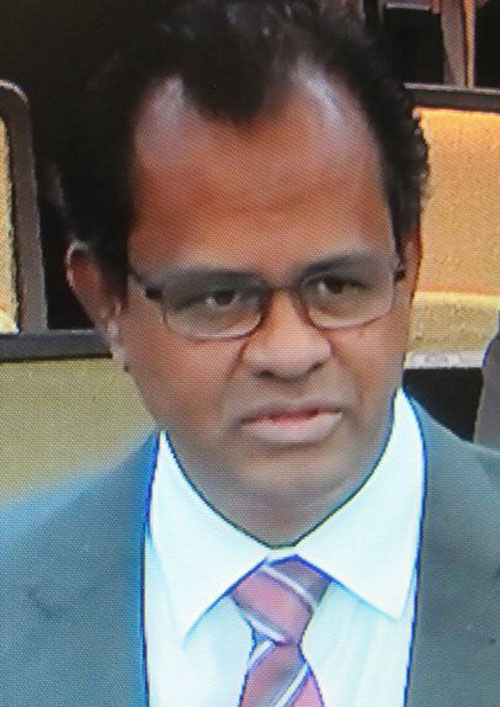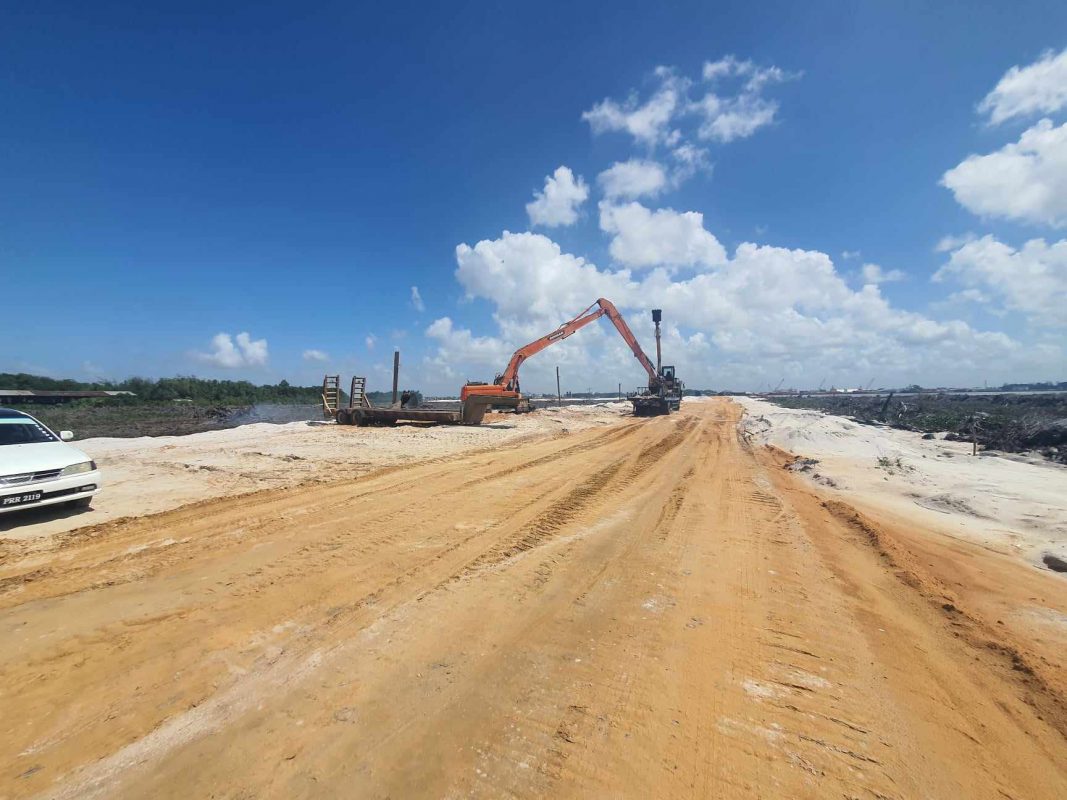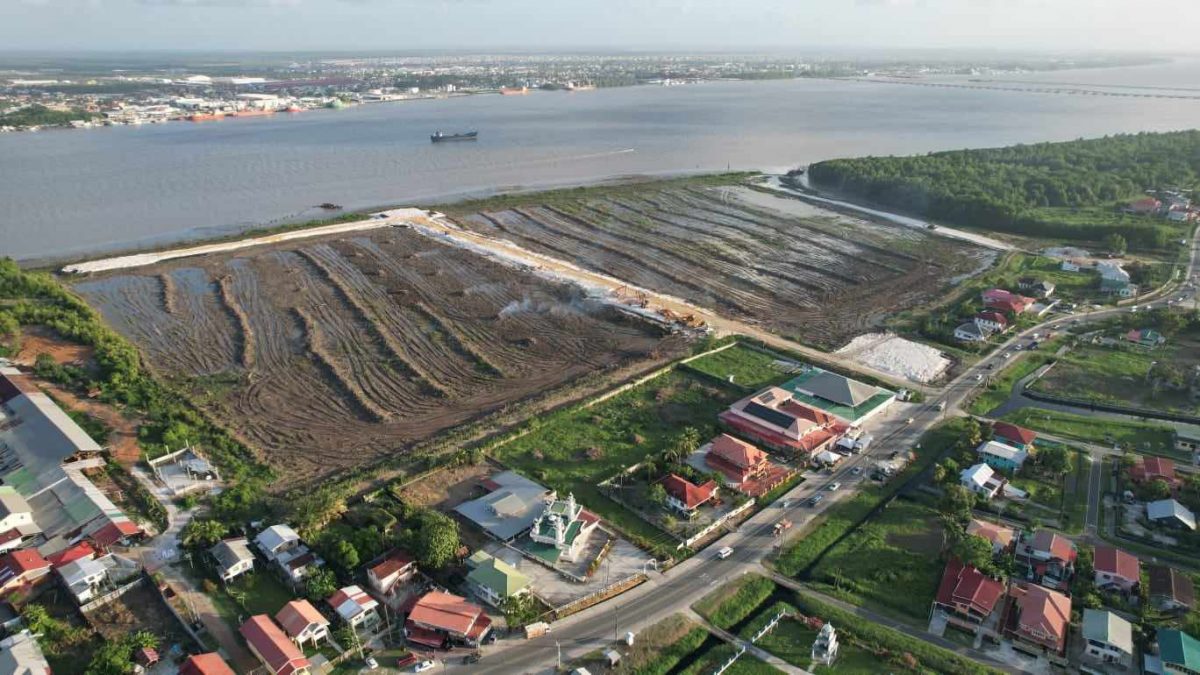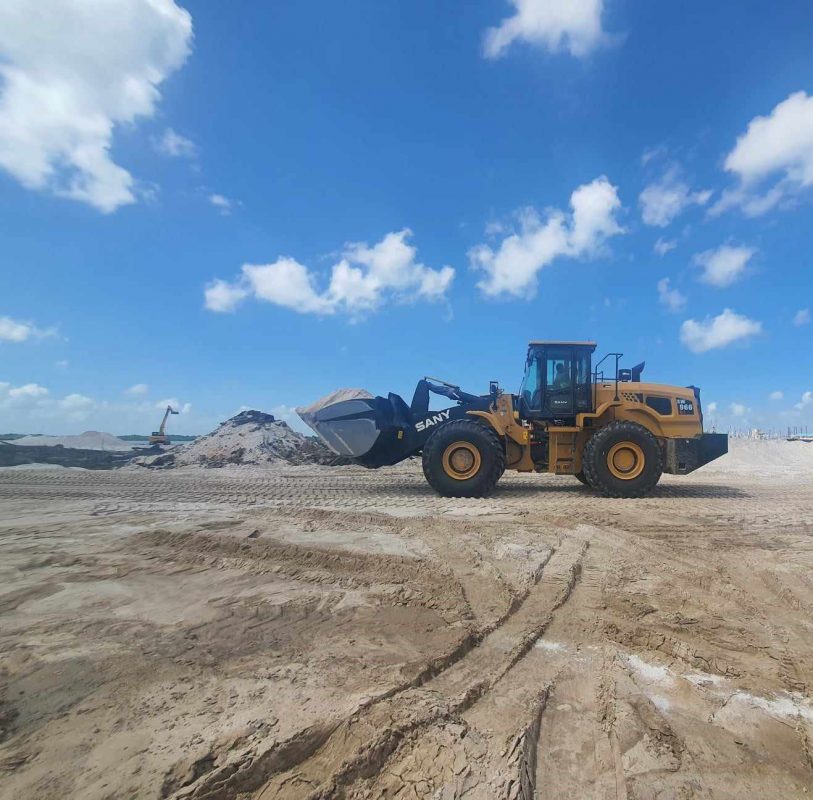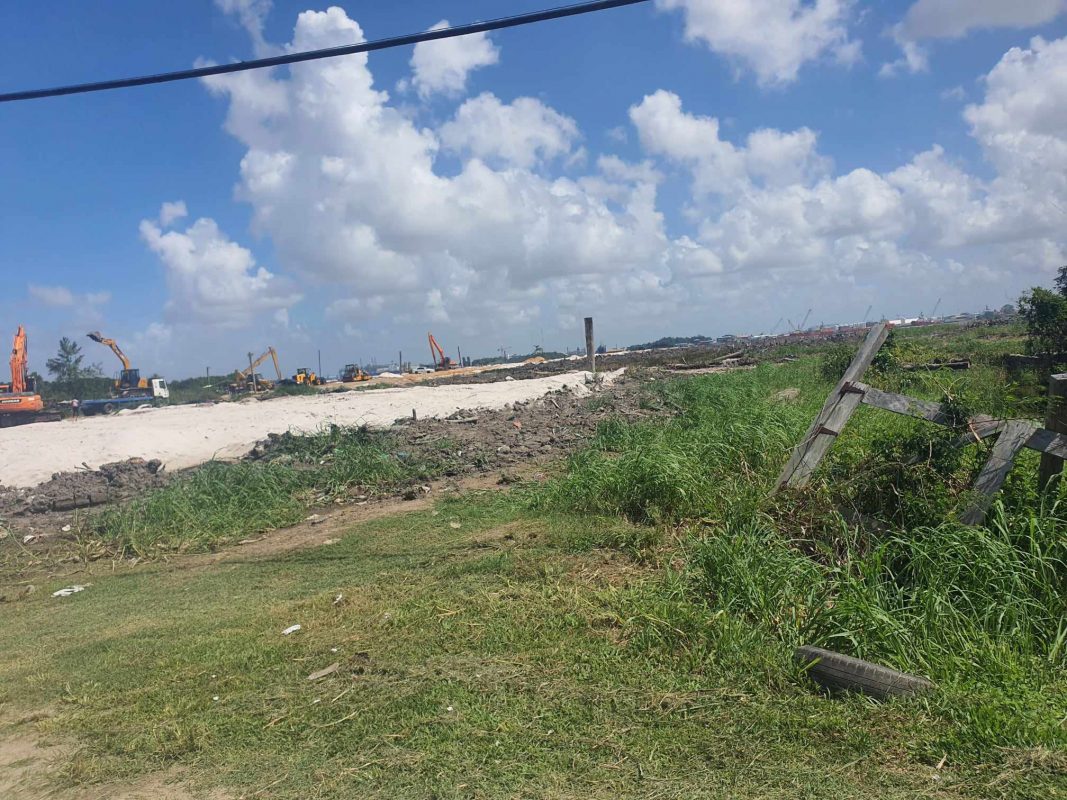TriStar Investment is forging ahead with works on three million square feet of land at Versailles on the West Bank of Demerara, for what will be a state-of-the-art US$160 million oil and gas shore base but which will also enable movement of cargo through Region Three.
With Phase I of the project scheduled to be completed by the end of the third quarter of this year, Guyanese-American developer, Kris Persaud, told the Sunday Stabroek via telephone from the United States, that he was enthused that the project will help to complement the planned Region Three developmental transformation.
“Basically and in short, it is a port that can be used for cargo. It will double the port capacity we have on the west side. It will three million square feet of lands next to five berths, five berths!… We are expecting that two berths and one million square feet of land will be completed by the end of September this year…”
“While we cater for the oil and gas sector, this port isn’t exclusively for that… since, as I explained, it can be used for cargo and other transport… This is all coming in the face of the explosive growth projected for Guyana and expansion and production in every sector…,” he added.
He said that as projected, in the next three to the next three to five years, the transformation here would need such a facility to meet the projected demand. Persaud explained that each berth or ship mooring, handling capacity will be sufficient for incoming vessels.
In addition, the vast swathe of lands when developed, will include all the elements and infrastructure of an oil and gas shore base facility, while still having capacity for chemical storage and dry docking.
When the Sunday Stabroek visited the site on Friday, large areas of land had been cleared and a number of machines were in operation landfilling areas. Materials that looked like steel piles and other construction material were piled up at the extreme right of an area and a crane was loading other material into trucks.
A road had been built to form a passage from the public thoroughfare inwards to the Demerara River bank on the property.
Large amounts of sand were filled into the immediate areas where the Demerara River met the property.
It is unclear if this was in preparation for the steel reinforcement works promised by the company when it had initially controversially cleared a large section of mangroves in 2021.
TriStar faced severe criticism when it began preparatory works for the project in 2021, over its destruction of the large swathe of mangroves on its property but had said that it would replace the natural sea defence system with steel revetment to ensure there was no flooding of the area.
After being criticised for uprooting the mangroves, the company had told this newspaper that nearly 20,000 tonnes of steel sheet piles were available to construct a revetment to protect the lands.
“When completed, the project will be a dedicated oil and gas shore base with six berths. It will be operated to international standards, including ISO 45001, ISO 9001, and ISO 14001, as well as ISPS port security standards. The shore base will be operated to the highest international Health, Safety, Security and Environmental (HSSE) standards. As a dedicated oil and gas facility, the WDSB will allow for optimal control of logistics and management of HSSE,” a company representative had told Stabroek News.
Government had reasoned that while mangroves form natural sea defences, this country had to also take into context that it was a developing one and the Demerara River bank especially would see development that required clearing of the mangroves.
It had also made clear that it would not compromise the draining capacity and as such replacement sea defences would be instituted.
“…The development that is taking place in Guyana is not willy-nilly. This is well-planned. Structured. Structured in a context to bring about real world-class development of Guyana… and that is not something to be sabotaged. That is something to be encouraged,” Minister of Public Works Juan Edghill had said at the time he addressed the removal of mangroves by TriStar Incorporated.
With Guyana now an oil producing country, Edghill contended that there are infrastructural developments that are required to facilitate and properly service what is taking place in the country’s exclusive economic zone. In particular, he said that the development on the West Demerara to facilitate the “new wave of development coming to Guyana” would require the removal of mangroves. “At some stage, mangroves will be displaced,” he averred. “Mangroves will have to be removed.”
“…The big issue is not flooding because the adequacy of the measures, the hard structures to prevent flooding, are in place. So the big issue is if we should cut mangroves or don’t cut mangroves,” he added.
Construction of the facility was set to start in the last quarter of 2021 and it was anticipated that the project would be completed by the third quarter of 2023. Then Project Manager, Narendra Sukhdeo, had told Stabroek News in an interview that the revetment works were catered for and that the sheet piling was evidence of that commitment. He had also explained that the project capitalisation was pegged at between US$100-150 million and when completed would see the employment of about 250 to 300 persons in the first phase.
“The Versailles shore base will stimulate the overall economic development of West Bank, Demerara. TriStar’s vision is to develop a ‘win-win’ shore base project that aligns with the goals of the Government of Guyana and to also produce substantial socioeconomic benefits to the West Bank Demerara region,” Sukhdeo said, explaining the project’s intent.
For Persaud, the planned vision for his company’s adding to the holistic development and economic transformation of this country has not changed.
“It is the viable port for expanded usage north of the Demerara Harbour Bridge,” he said while explaining the time constraints faced by persons who have to use the bridge to transport cargo to and from Region Three.
While not naming TriStar, President Irfaan Ali had told the recent Private Sector Commission dinner that Region Three would this year see an additional port, and its construction was evidence of the economic growth of the country. In addition, he said that with the planned gas-to-energy plant at Region Three coming on stream and a number of businesses from various sectors starting up in the region, projects such as the port were needed.
President of the Private Sector Commission, Komal Singh told this newspaper that for Guyana, it is a welcome project.
“The TriStar Port will add tremendous value and help to reduce the cost in moving cargo from Georgetown to Region Three and beyond…,” Singh using rice production as one example, “With TriStar there, that [transporting via the bridge] is reduced…,” Singh said.
“It is really a no-brainer as to the benefits another port will bring to not only the country but especially Region Three. Even though we will have a New Demerara Harbour Bridge, there is still that cost to moving cargo via the bridge,” he added.
He said that many persons when they hear of port facilities here, automatically think that it would be to only serve the oil and gas sector. “Not all will be oil and gas, the spinoffs will be significant and that is what we are looking at,” the PSC President posited.
Shore base services are currently being provided to the oil and gas industry by Guyana Shore Base Inc and the Vreed-en-Hoop Shorebase Inc.
